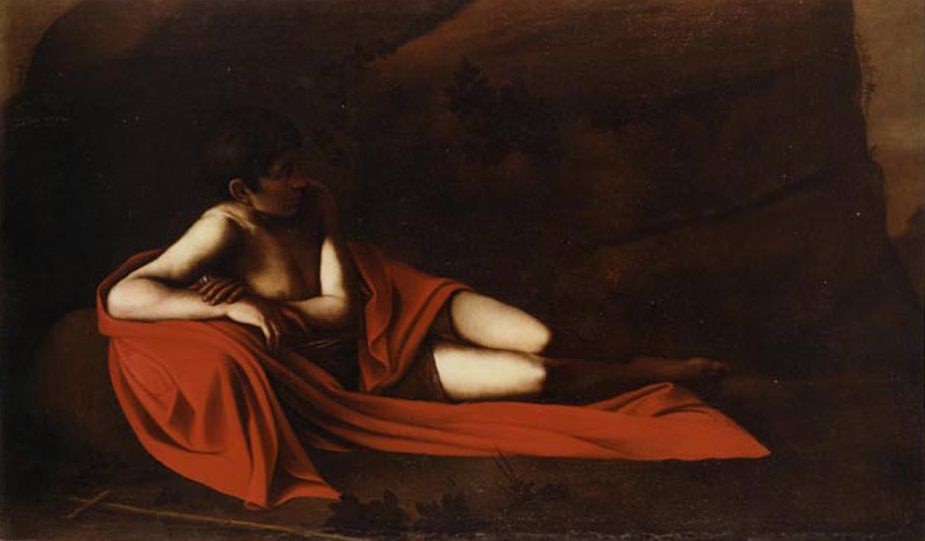No other artist has quite captured the emotional intensity of the Baptist.
Lenten Campaign 2025
This content is free of charge, as are all our articles.
Support us with a donation that is tax-deductible and enable us to continue to reach millions of readers.
In the Gospel of Mark, St. John the Baptist is heralded as the fulfillment of Isaiah’s prophecy:
As it is written in Isaiah the prophet:
“Behold, I am sending my messenger ahead of you; he will prepare your way. A voice of one crying out in the desert: ‘Prepare the way of the Lord, make straight his paths.'”
Many emotionally intense paintings have been inspired by John’s role in salvation history, from the baptism of Jesus in the Jordan River to his murder by King Herod. But no artist has rivaled Caravaggio’s interest in the figure of Saint John the Baptist. In the artist’s relatively short life– he died at only 38 years old — Caravaggio completed at least eight paintings of the saint. Here is a gallery of the most moving depictions of St. John the Baptist by Michelangelo Merisi, known as Caravaggio:
1. John the Baptist (John in the Wilderness), Museo Tesoro Catedralicio, Toledo (1598)
This painting was likely completed by Caravaggio, although some art historians attribute it to Bartolomeo Cavarozzi, an early follower of the Baroque master. However, the level of detail shown in the plants at the feet of the subject and the intense emotional character of his face suggest that this work was most likely Caravaggio’s own. The details of the leaves at the feet of the Baptist are almost identical to those painted in the famous still-life work titled “Basket of Fruit.” The introspective pose of St. John the Baptist conveys a sense of melancholy typical of Caravaggio’s dramatic style. Caravaggio’s choice of representing the Baptist as a youth is a departure from more canonical representations that usually see him as either a child or an adult. It is aligned with the painter’s interest in depicting the fragile beauty of adolescents, something he has masterfully done in other works such as “Bacchus.”
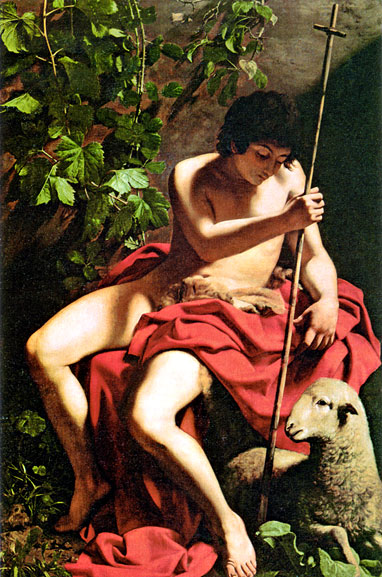
2. John the Baptist (Youth with a Ram), Musei Capitolini, Rome (1602)
Another depiction of St. John the Baptist as an adolescent, the “Youth With A Ram” brings out some of the most distinctive aspects of Caravaggio’s painting. Here, John is shown half-reclining, holding a ram, in a very dynamic pose that displays the knowledge of anatomy held by the Baroque master. A scrap of camel’s skin hidden in the red cloak reveals that the youthful subject is indeed St. John the Baptist, whose camel’s hair clothing is mentioned in the scriptures. The amazing chiaroscuro (contrast of light and shadow) that brings to life John’s grin is also another sign of Caravaggio’ style.
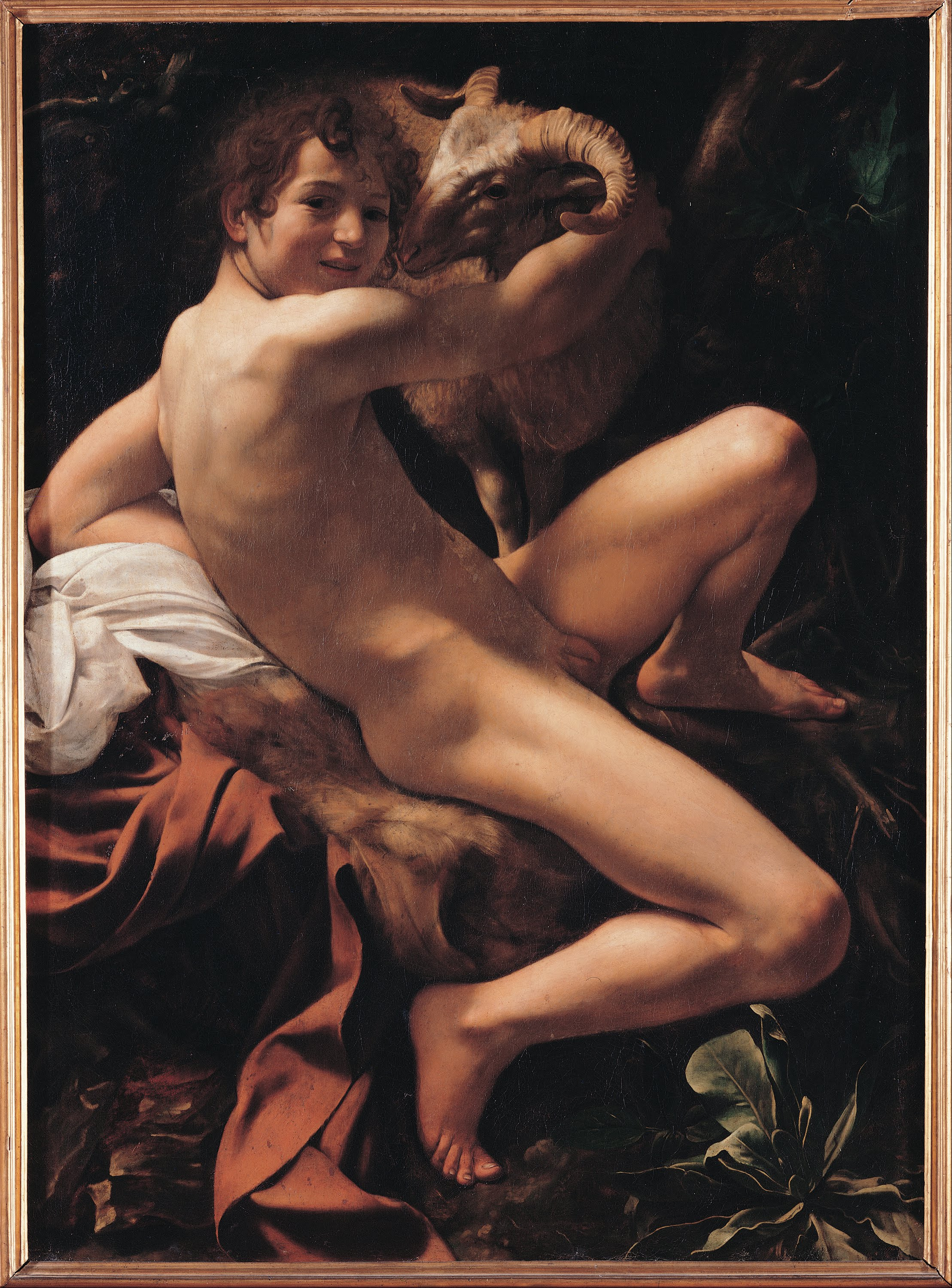
3. Saint John the Baptist in the Wilderness (1604), Nelson-Atkins Museum of Art, Kansas City
Completed in 1604 for Italian banker Ottavio Costa, this representation of St. John the Baptist by Caravaggio at the Nelson-Atkins Museum of Art, Kansas City, is one of the most famous paintings of St. John the Baptist in art history. The painting is structured around the contrast between light and dark. Light illuminates the dramatic body of a pensive St. John the Baptist against a striking dark background. The deep melancholy of the Baptist reflects Caravaggio’s psychological appreciation of human nature and perhaps a premonition of the saint’s tragic fate.
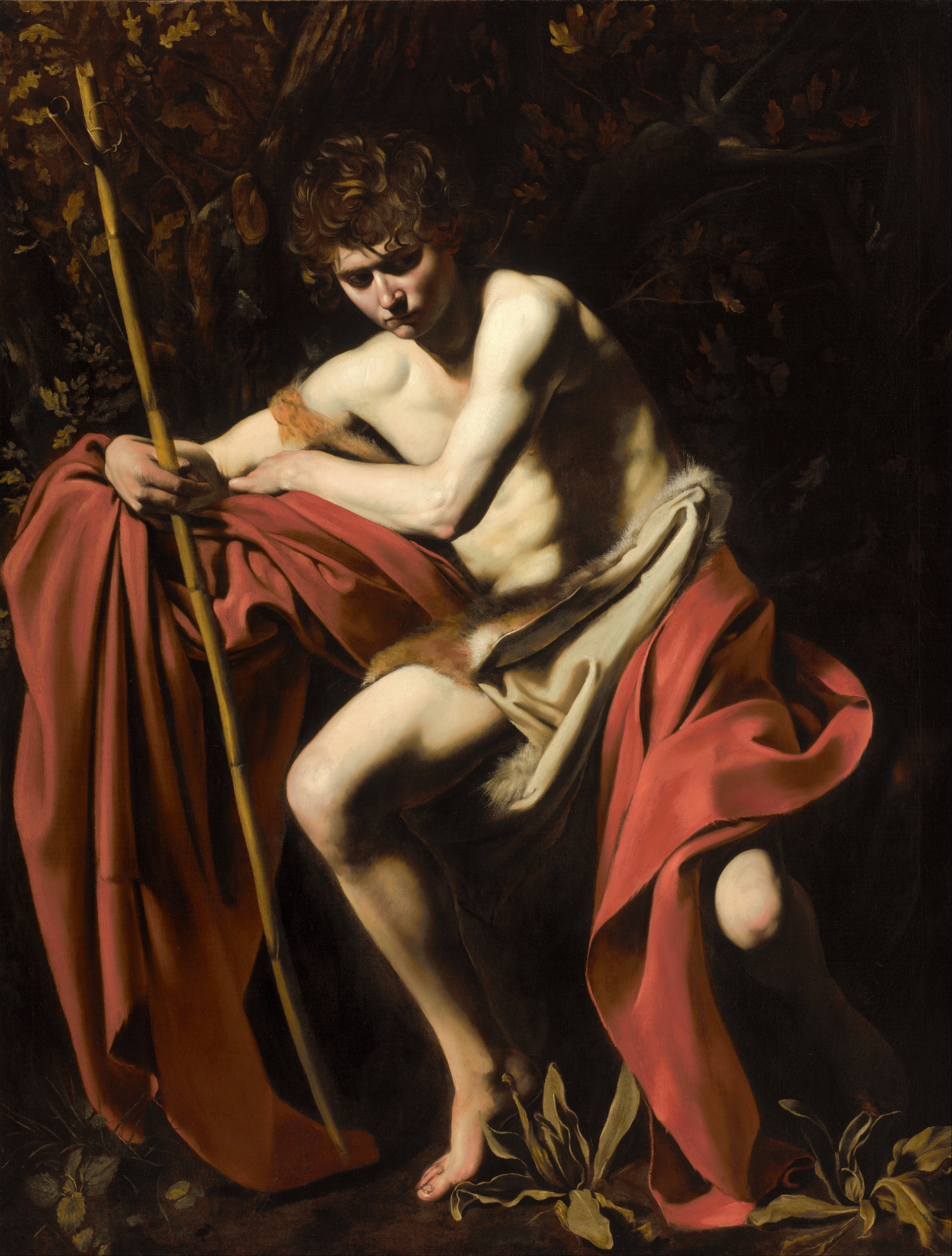
4. John the Baptist (John in the Wilderness), Galleria Nazione D’Arte Antica, Rome (1604)
In this 1604 oil on canvas, which is part of the collection of the Galleria Nazione D’Arte Antica in Rome, Italy, Caravaggio continues the psychological exploration of St. John the Baptist he began with earlier works on the same subject. While other Renaissance masters had also captured the Baptist as a cryptic nude figure, Caravaggio’s rendition adds a new aspect of realism and dramatic tension. The Baptist is represented with the rough features of a laborer, a much more humane depiction compared with the idealized figures of Raphael and Michelangelo. This Baptist is not “just” the saint but also the boy who will soon endure a tragic destiny for his faith.
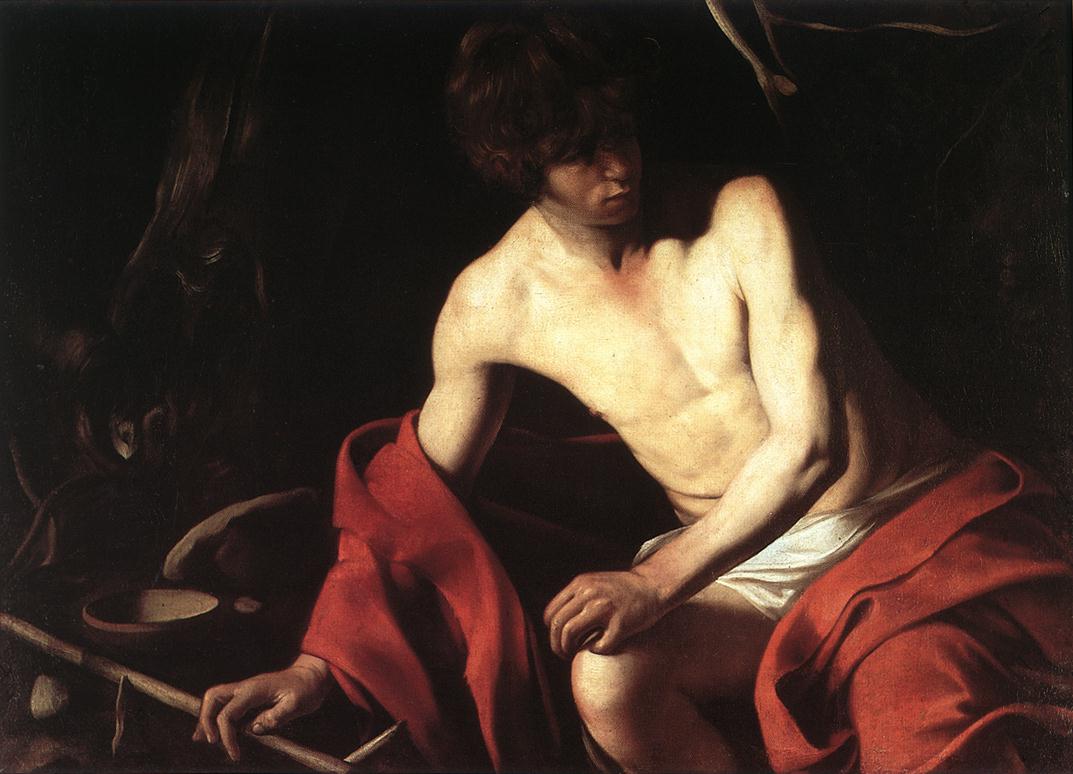
5. John the Baptist (John in the Wilderness) Galleria Borghese, Rome (1610)
This 1610 oil on canvas kept at the Galleria Borghese in Rome, Italy, is yet another take by Caravaggio on the subject of St. John The Baptist in the wild. Here, an adolescent St. John is represented against a dark-colored background, with a sheep nibbling in the back of the scene. The whole painting has a surreal atmosphere, as if the figures were suspended in time. The right red cloak of the Baptist stands in sharp contrast with the pale, holy figure of the saint and the dark background. The overall emotion conveyed by Caravaggio is that of sorrow, something he had explored before in the other paintings on this same subject.
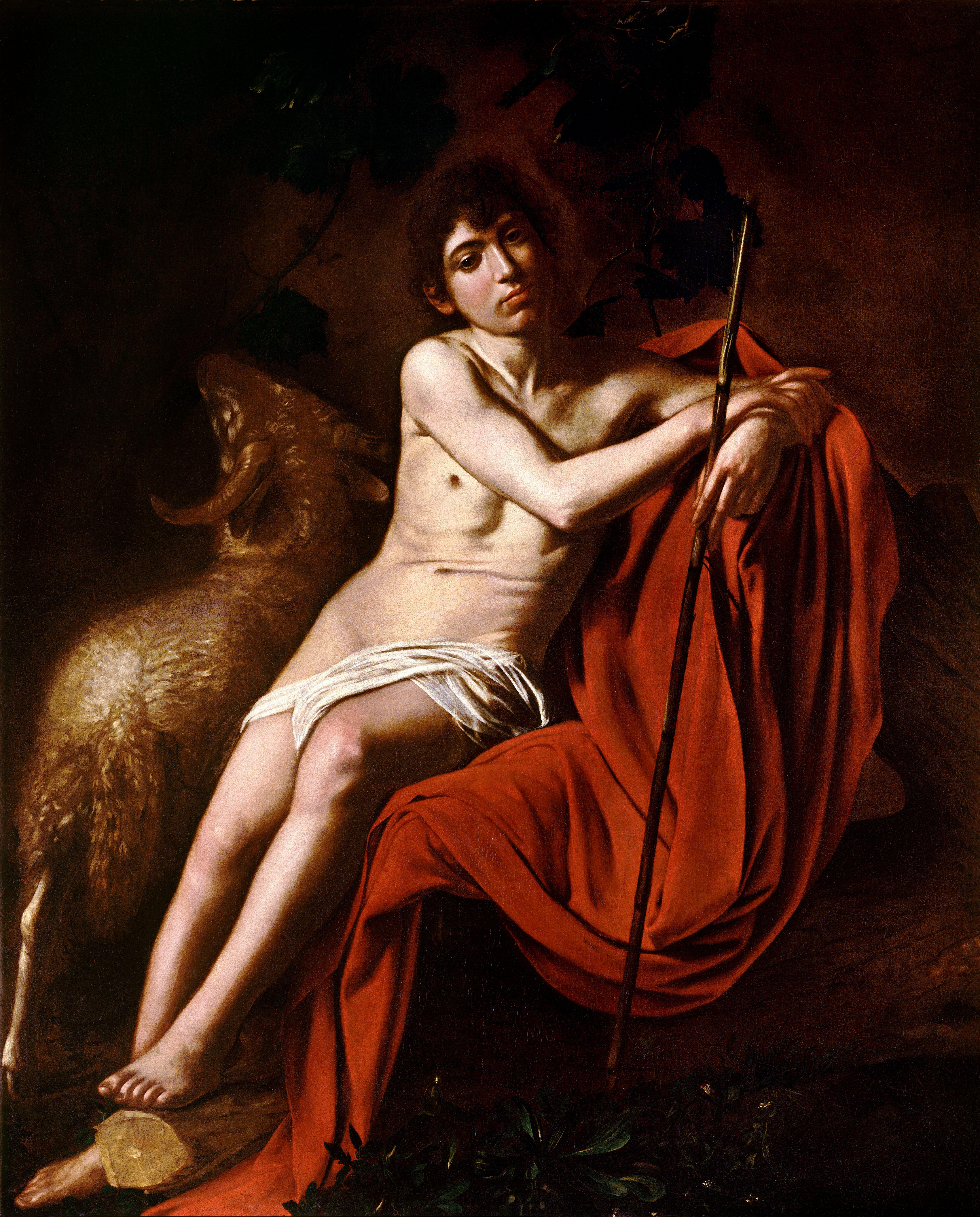
6. Reclining Baptist (1610), Private Collection
This 1610 painting representing a reclining St. John the Baptist is a stark departure from Caravaggio’s other works on the same subject. Rather than depicting John as a melancholic teen in the wild, almost prescient of his destiny, Caravaggio is depicting the Baptist as a mysterious figure reclining in a pose that is more akin to pagan representation than orthodox Catholic paintings. The pose of St. John was indeed inspired by pagan-themed works that Caravaggio had admired during his stay in Venice, such as “Venuses” by both Giorgione and Titian.
